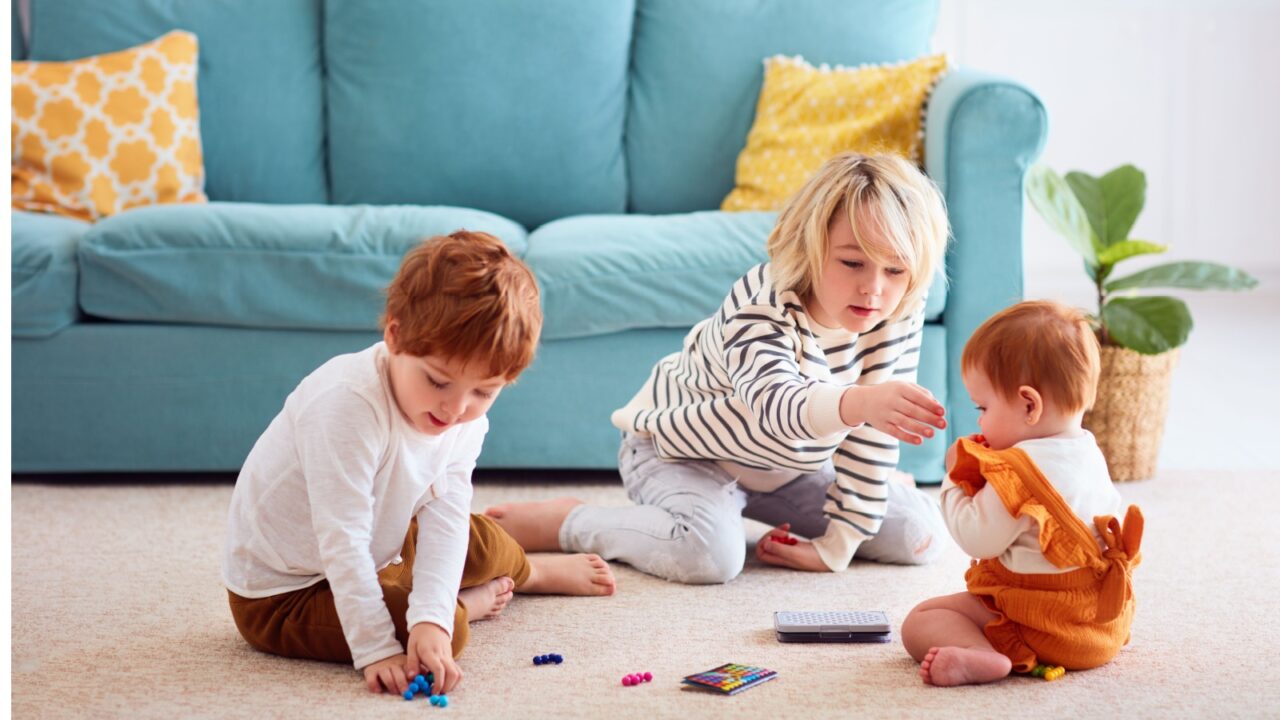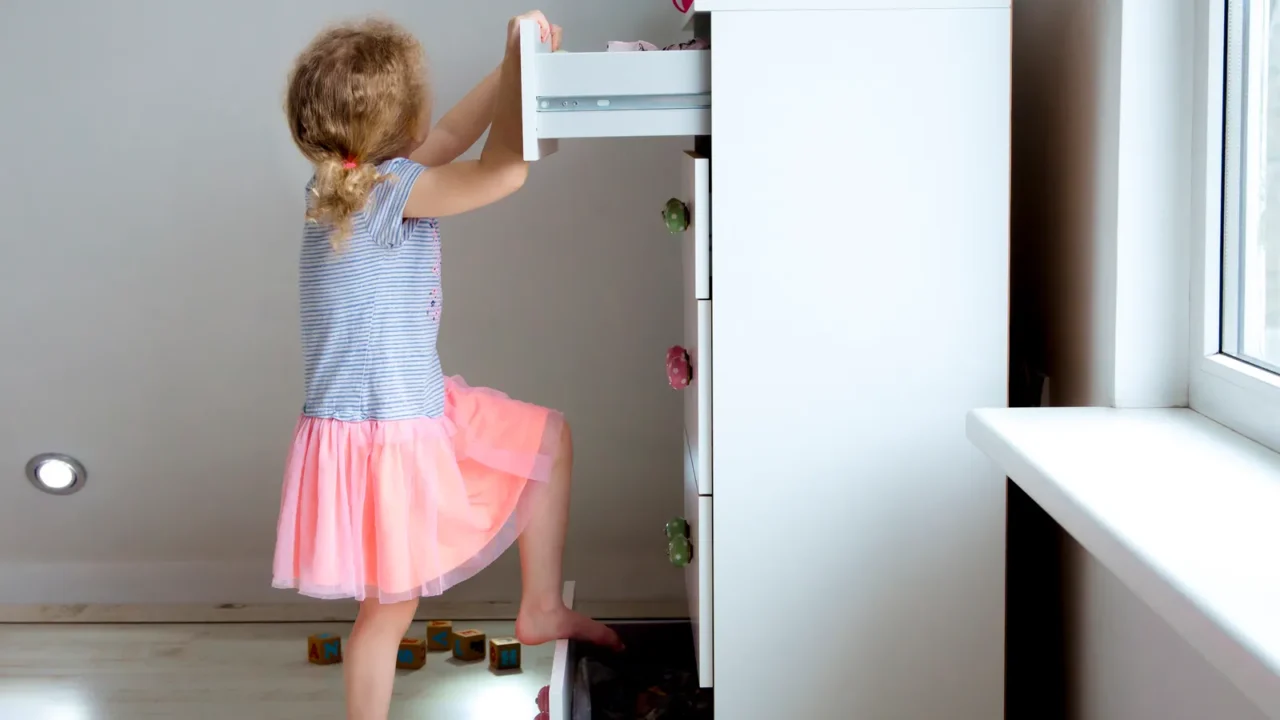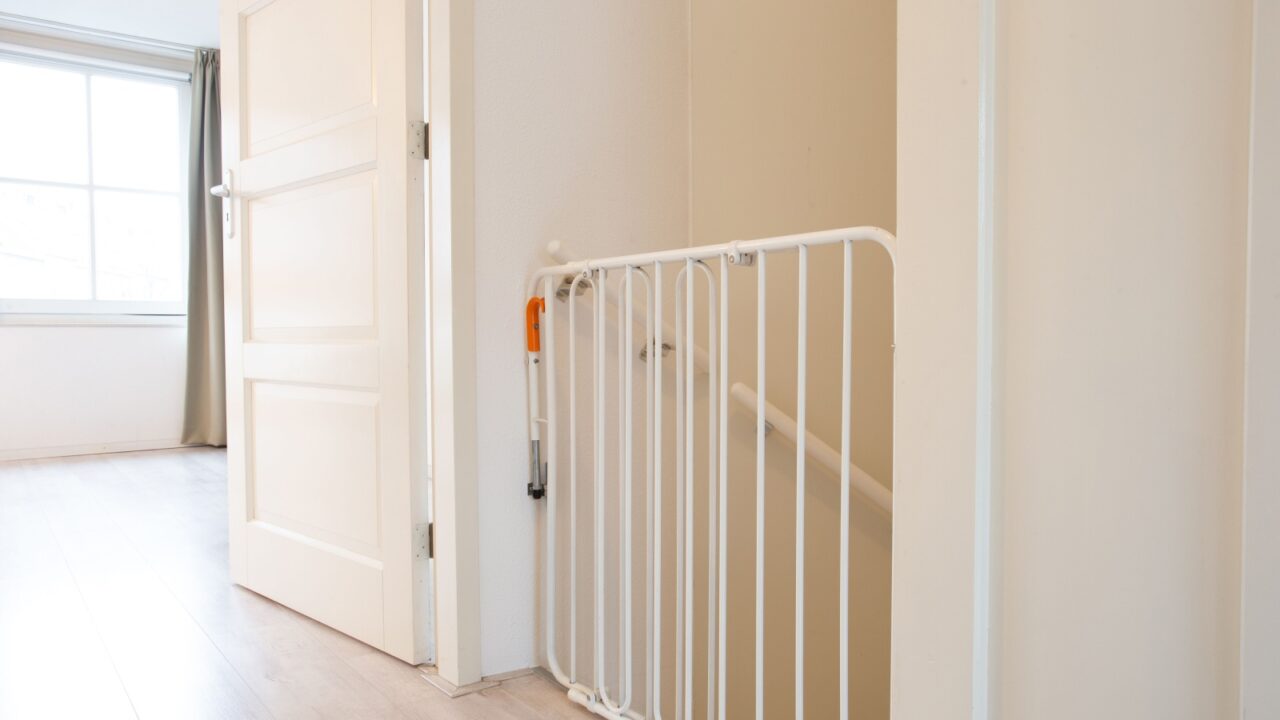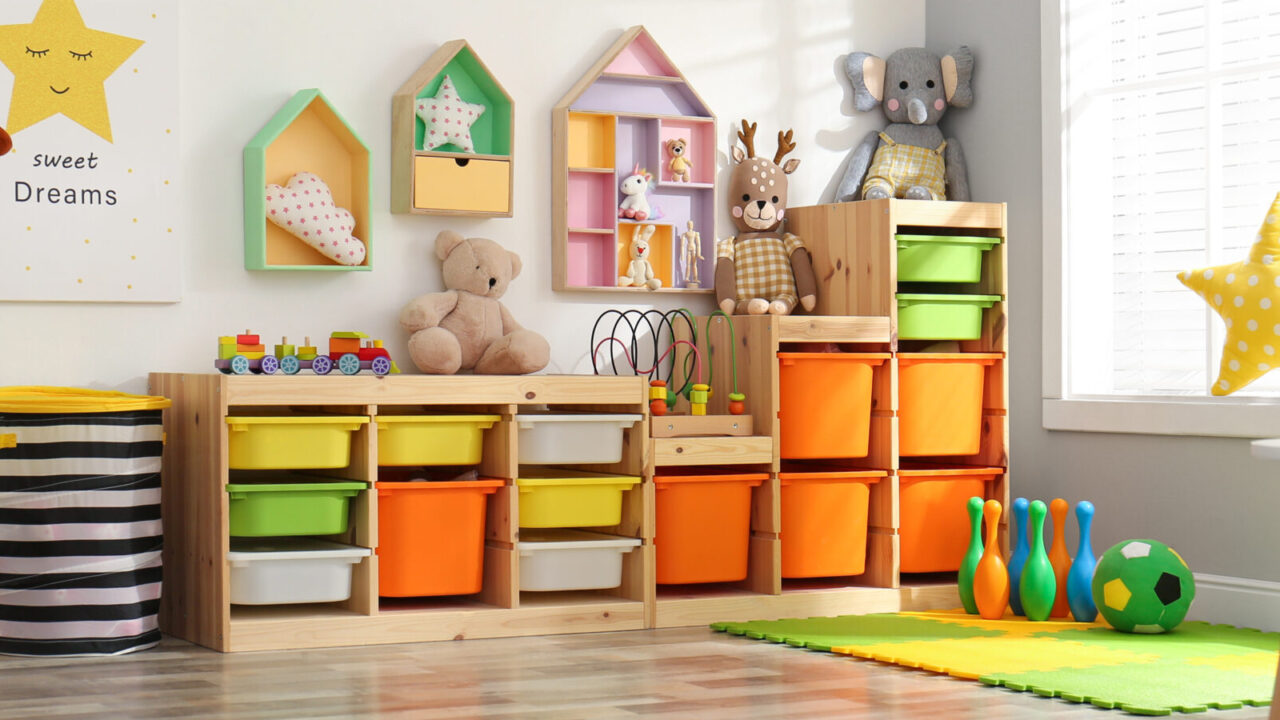
Childproofing Your Home
The rising number of children visiting the ER each year due to home injuries is concerning. Children explore fearlessly, unaware of risks. But as a parent, it’s your responsibility to create a safe home environment for them.
No, you don’t have to make big changes. A few simple adjustments make a significant difference. By securing your home, you can help minimize risks and protect their natural curiosity.
Swipe to discover the key ways to ensure your home is safe and secure for young ones.

Anchor Furniture to Prevent Tipping Hazards
Kids love to climb, be it anything, even furniture. However, top-heavy furniture can easily tip, posing serious injuries to your child.
Secure heavy items like bookshelves and TVs with wall anchors to keep them stable. To reduce climbing risks, avoid placing enticing items on top of high furniture.
These small additions help prevent furniture from toppling over, so your children can explore freely without any danger.

Minimize Choking Hazards
Toddlers have the habit of putting anything or everything in their mouths. Regularly vacuum to pick up small items, and bite-sized items in secure containers away from their reach.
Especially, find devices with button or lithium coin batteries and keep them out of reach of children. When inhaled or swallowed, these small batteries can cause life-threatening damage to the esophagus or intestines.

Secure Windows and Balcony Access
Windows and balconies offer kids a glimpse of the world outside, but they also pose safety risks if not properly secured.
Preventing falls and other accidents is essential, especially in multi-story homes or apartments. Install window guards, window locks, or stops to limit how far windows can open, making sure they open no more than four inches.
Moreover, avoid window coverings that have cords to prevent accidental strangulation.

Cover Electrical Outlets and Manage Cords
Curious kids often explore every corner, and unfortunately, electrical outlets and cords can be magnets for their attention.
Without proper safety measures, children may poke fingers or objects into outlets, creating an electric shock hazard, or pulling on cords, which could lead to entanglement or tripping.
To prevent these accidents, use outlet covers and bundle cords to keep them out of reach. Sliding outlet covers are especially useful and tamper-resistant.

Install Safety Gates in Key Areas
Stairs, kitchens, and garages can be dangerous for little ones. Safety gates placed strategically at stairways and entryways help create safe zones.
Pressure-mounted gates are good for temporary setups, while hardware-mounted gates are essential for stairs. Choose a gate with a latch that’s easy for adults to operate but secure for kids.

Soften Sharp Edges and Corners
Coffee tables, counters, and other furniture surfaces often have sharp edges that can lead to bumps and bruises for toddlers.
Adding edge and corner guards reduces hitting impact, in case a child falls against these surfaces.
Opt for clear guards that subtly blend with furniture. Or, choose colorful guards in fun shapes to add a bit of character to your furniture style while keeping things safe.

Install Smoke and Carbon Monoxide (CO) Detectors
Fire, smoke, and carbon monoxide detectors are essential safety measures in every home. Place them in key areas and test them monthly to ensure they work properly.
Cover stovetop knobs to prevent accidental burns, and keep fire extinguishers in accessible spots. Moreover, teach your young children how to exit safely in case of an emergency.

Create a Safe Kitchen Space
Your kitchen is filled with hazards for kids, from hot spills to sharp tools. Keep knives, heavy pots, and appliances out of reach, ideally in locked drawers.
Avoid tablecloths that can be pulled down, spilling hot dishes or objects, and always supervise kids around stoves and counters.
Never allow little kids to go into the kitchen without adult supervision. Also, they should be educated on what to touch and what not to touch in the kitchen.
Set up a designated safe area in the kitchen where kids can participate in safe activities, like washing vegetables or stirring baking ingredients, to help them feel involved

Prevent Bathroom Accidents
Bathrooms are another dangerous spot for your kids. It poses unique risks, from slippery surfaces to accessible medications. Use non-slip mats and toilet locks to prevent falls or accidental drowning.
Store medications in locked, high cabinets, as accidental ingestion is one of the leading poisoning risks for young children.
Ensure supervision during bath time, and drain the tub after every use to remove another potential hazard.

Secure Hazardous Items in the Garage
Another often overlooked space that can be dangerous for kids is your garage. It often contains tools and chemicals that are not safe for children.
Restrict kids from visiting the garage without any adults. Use childproof doorknob covers to prevent unsupervised access to the garage.
Plus, organize tools, paints, and chemicals on high shelves or locked cabinets.

Keep Heavy or Fragile Items Out of Reach
Falling objects are a common source of injury for kids. Avoid placing heavy or fragile items like vases or frames within a child’s reach.
Place breakable items on higher shelves and secure them with museum putty or adhesive strips for added stability, reducing risks if your child tries to grab or pull at nearby objects.

Organize Safe and Accessible Toy Storage
Organized play spaces make toys accessible and reduce tripping hazards. Opt for storage bins without lids to prevent pinched fingers, and choose open storage units to simplify cleanup.
Clutter-free play areas help lower fall risks, letting your kids enjoy safe, open spaces. Encourage them to tidy up, reinforcing good habits and a safe home environment.

Choosing Safe Wall Paint Materials
Wall paint can release harmful chemicals called volatile organic compounds (VOCs), which may linger in the air and pose respiratory risks, especially for children.
When painting, opt for low-VOC or zero-VOC paints, which are widely available and much safer for indoor air quality.
Avoid using old paint, as it can contain lead or other hazardous materials banned from newer formulas.

Teaching children about emergency procedures
Teaching children emergency procedures helps them react safely and confidently.
Start with simple concepts—like recognizing a smoke alarm sound and knowing how to “stop, drop, and roll” in a fire.
Explain the importance of calling emergency numbers like 911 (or your local emergency line) in situations like a fire, medical emergency, or if someone is in danger.
Practice a monthly evacuation drill to build their confidence, making it a fun, team-building exercise.

Regular Safety Checks to Adapt as Kids Grow
Creating a safe environment for children is not a one-time thing. It’s an ongoing process that requires constant monitoring and adaptation.
Check safety gates, locks, and guards frequently. Adjust childproofing measures as your child grows, ensuring their home remains a secure environment for exploration and learning.
Check out this article: Design a Playful and Safe Space for Your Kids, to create a safe playful area for your little ones.

Opt for Non-Toxic Cleaning Products
Household cleaners can contain harmful chemicals, there can be too much risk if kids accidentally drink them. Therefore, switch to non-toxic, eco-friendly products to minimize risks.
Use home cleaning solutions like baking soda, vinegar, lemon, and other items that are chemical-free and also cheaper than market-bought cleaners.
Even if you can’t switch completely, try to store chemical cleaning products out of reach or in cabinets with locks.
Check Clean Smarter with These Eco-Friendly Solutions to discover easy, eco-friendly cleaning swaps to keep your home safe and chemical-free for your kids.